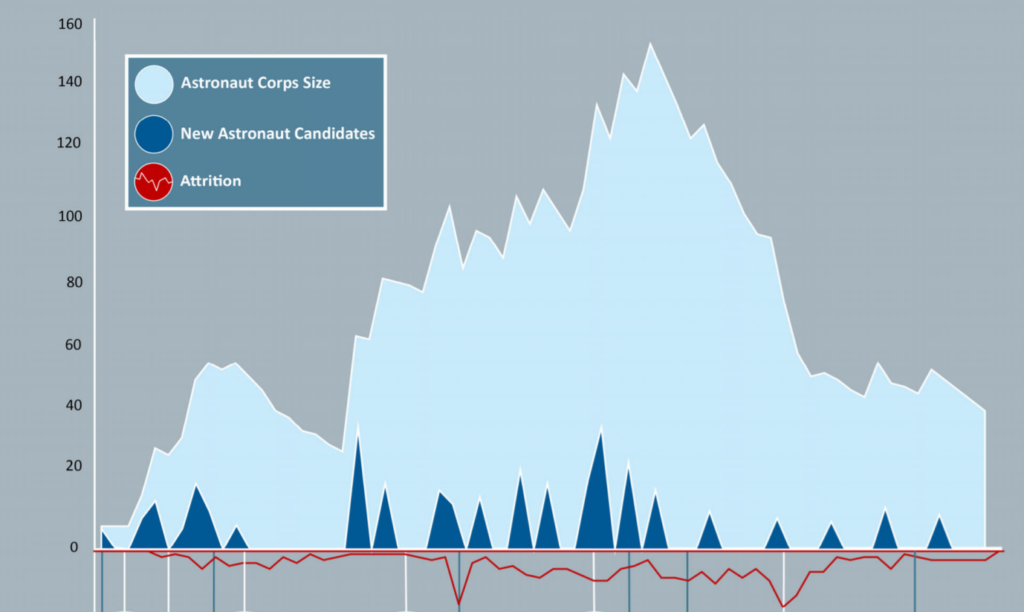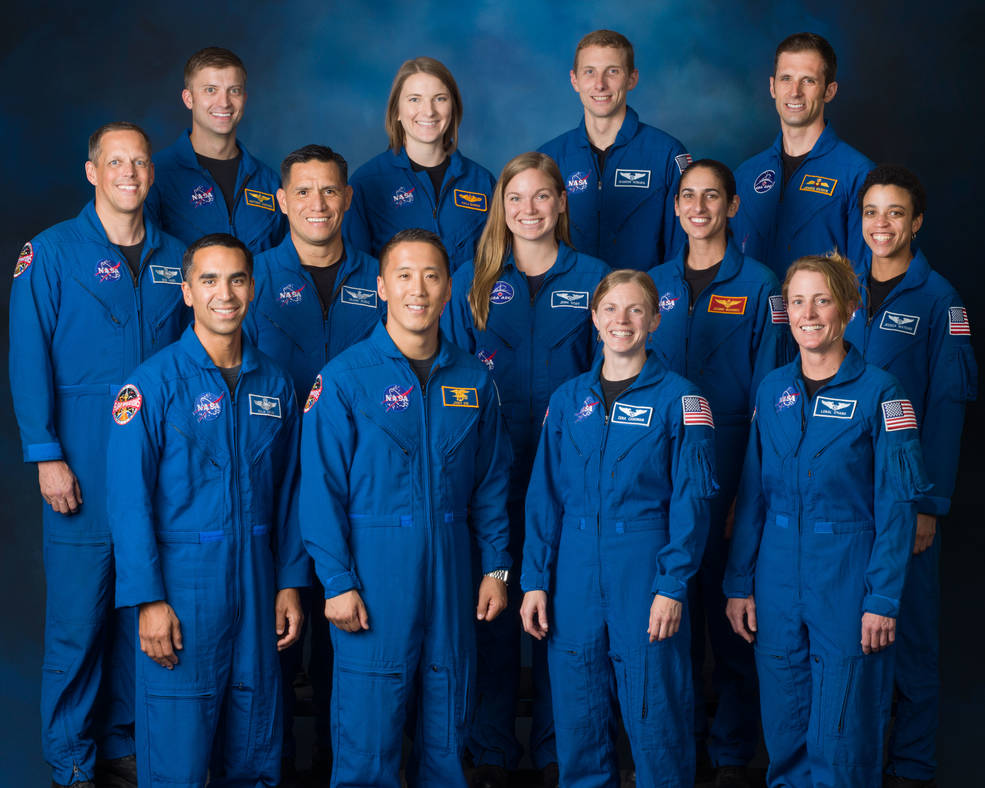
NASA Is Running Out Of Astronauts
Currently, NASA is hard at work developing new technology and plans for future missions throughout space. This includes continued International Space Station operations, returning humans to the Moon with Artemis, and even future human missions to Mars after getting experience on the Moon. Each of these missions and plans have a lot in common including the need for human astronauts.
A recent report from the Office of Inspector General on NASA’s Management of its Astronaut Corps shows the agency is running low on astronauts. Specifically, they found that a combination of factors including NASA’s current operations, future mission needs, and possible attrition of current astronauts could cause a big problem in the current and coming years. All of which combine to create a very real concern that NASA needs to tackle.
Astronauts are some of the smartest and overall brightest humans each country has to offer. The process of becoming one reflects this in many ways. In addition, the training process for an astronaut is immensely important and can take a lot of time. These factors add to the problem as it’s not as easy as you think to try and recruit, train, and prepare more astronauts in a relatively short period of time.
Astronaut Shortage

The Office of Inspector General did a very thorough report and investigation on NASA’s current astronauts, training, needs, and future missions. After reaching its peak of nearly 150 astronauts in 2000, the size of the corps diminished with the end of Space Shuttle missions in 2011 and now stands at 44, one of the smallest cadres of astronauts in the past 20 years. In this report, they examined NASA’s management of its astronaut corps, specifically the extent to which NASA’s processes for sizing, training, and assigning the corps are aligned with the Agency’s current and future missions and objectives. The processes NASA uses to size, train, and assign astronauts to specific missions are primarily calibrated toward meeting the current needs of the ISS. For example, NASA’s process for sizing the astronaut corps is designed to ensure that a sufficient number of astronauts are available to meet the Agency’s flight manifest needs, which includes maintaining a planned crew of between three and four astronauts on the Station over the next 5 years.
However, the astronaut corps is projected to fall below its targeted size or minimum manifest requirement in the fiscal years 2022 and 2023 due to attrition and additional space flight manifest needs. In addition, the Astronaut Office calculated that the corps size would exactly equal the number of flight manifest seats NASA will need in 2022. As a result, the Agency may not have a sufficient number of additional astronauts available for unanticipated attrition and crew reassignments or ground roles such as engaging in program development, staffing Astronaut Office leadership, and liaison positions, and serving as spokespeople for the Agency. In light of the expanding space flight opportunities anticipated for the Artemis missions, the corps might be at risk of being misaligned in the future, resulting in disruptive crew reorganizations or mission delays. Artemis missions are just around the corner in terms of time, all of which will require a constant stream of astronauts for many different missions. As of right now, NASA is not quite prepared for that extra demand of astronauts. This could cause additional delays to missions including Artemis.
Training & Skillset

Over time, the specific skillsets needed within the astronaut corps have evolved with the Agency’s space flight missions. From Apollo’s need for test pilots to the Station’s need for scientists and mission specialists. As the Artemis program offices work with the Flight Operations Directorate and Astronaut Office to identify required skillsets for space flight missions beyond the ISS (including pilots, medical doctors, and scientists), the composition of skillsets within the corps may need to be augmented to ensure sufficient capacity to execute Artemis missions. However, it was found that astronaut skillset data is not consistently collected, comprehensively organized, or regularly monitored or updated. The Chief and Deputy Chief of the Astronaut Office said they can use various tracking systems, if needed, but given the small number of astronauts in the corps, they primarily rely on their own informal knowledge to inform skillset decisions.
While this kind of informal decision-making has been used to manage ISS missions, it might not be effective as the size of the corps increases, still-evolving Artemis requirements are incorporated into astronaut training, and attempts to track skillsets over time for multiple missions become more complex. Not only this but The Astronaut Office’s personnel databases also lack comprehensive demographic information specific to the astronaut corps. This poses a challenge in assessing whether NASA is meeting Agency and Administration diversity, equity, inclusion, and accessibility objectives. Lastly, as the Agency prepares for crewed Artemis missions, astronaut training needs will change. As with sizing, the current astronaut training framework is primarily aligned to ISS mission requirements.
The Astronaut Office is in the process of developing a framework for Artemis training, but this framework has not been formally chartered nor have any Artemis crews been announced. This means specific mission-focused training for the Artemis II mission, the first crewed Artemis flight, has not yet begun. While the Astronaut Office estimates training for the Artemis III and successor missions will require approximately 2 years, even with the projected delays to Artemis II and III launches the Agency could be overestimating the time available to develop and implement the necessary training framework and regimen across key Artemis systems. Delays in moving beyond the current ISS-focused approach for current and future astronauts increase the risk of delays in developing the necessary training to meet Artemis mission goals. This all adds up and becomes another of many possible delays for the Artemis program.
Future Options
Based on the information that I just mentioned, NASA’s current lack of astronauts and possible training does not sound very promising for upcoming missions. However, the agency still has time and the Office of Inspector General had some recommendations as well. These recommendations included NASA’s Director of the Flight Operations Directorate and the Chief of the Astronaut Office to further centralize and maintain its collection, summary, and monitoring of detailed astronaut data. This data consists of skills, certifications, training, and demographics, to better support the sizing and alignment of the astronaut corps, and to help inform recruiting and training of astronauts to fulfill NASA’s strategic goals. They also recommended the Director of the Flight Operations Directorate and the Chief of the Astronaut Office should coordinate with Artemis program offices. This would help complete the development and chartering of the framework of Artemis boards and panels to ensure alignment with future mission training needs for new vehicles and missions, including Orion, next-generation spacesuits, HLS, and Gateway.
Conclusion
Exploring and working in space requires countless amounts of resources and smart individuals. This includes the need for astronauts who play a vital role in current and future NASA missions. However, a closer look found that a combination of factors including NASA’s current operations, future mission needs, and possible attrition of current astronauts could delay current and especially future operations. The agency still has time to work on and correct this error and do its best to train and prepare more astronauts for the future. We will have to wait and see what NASA does and the impact this has on the future of human missions to the ISS, Moon, and more.
